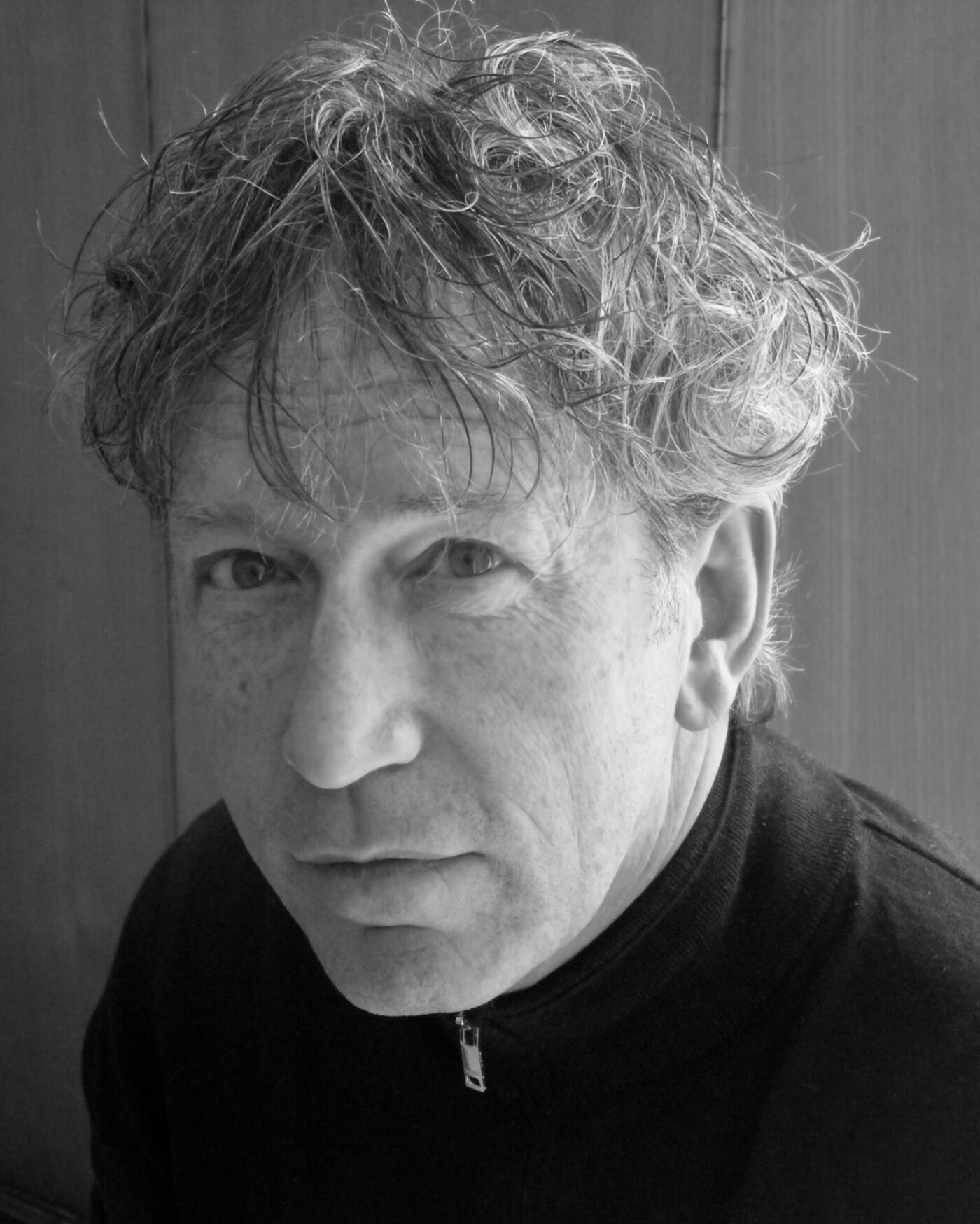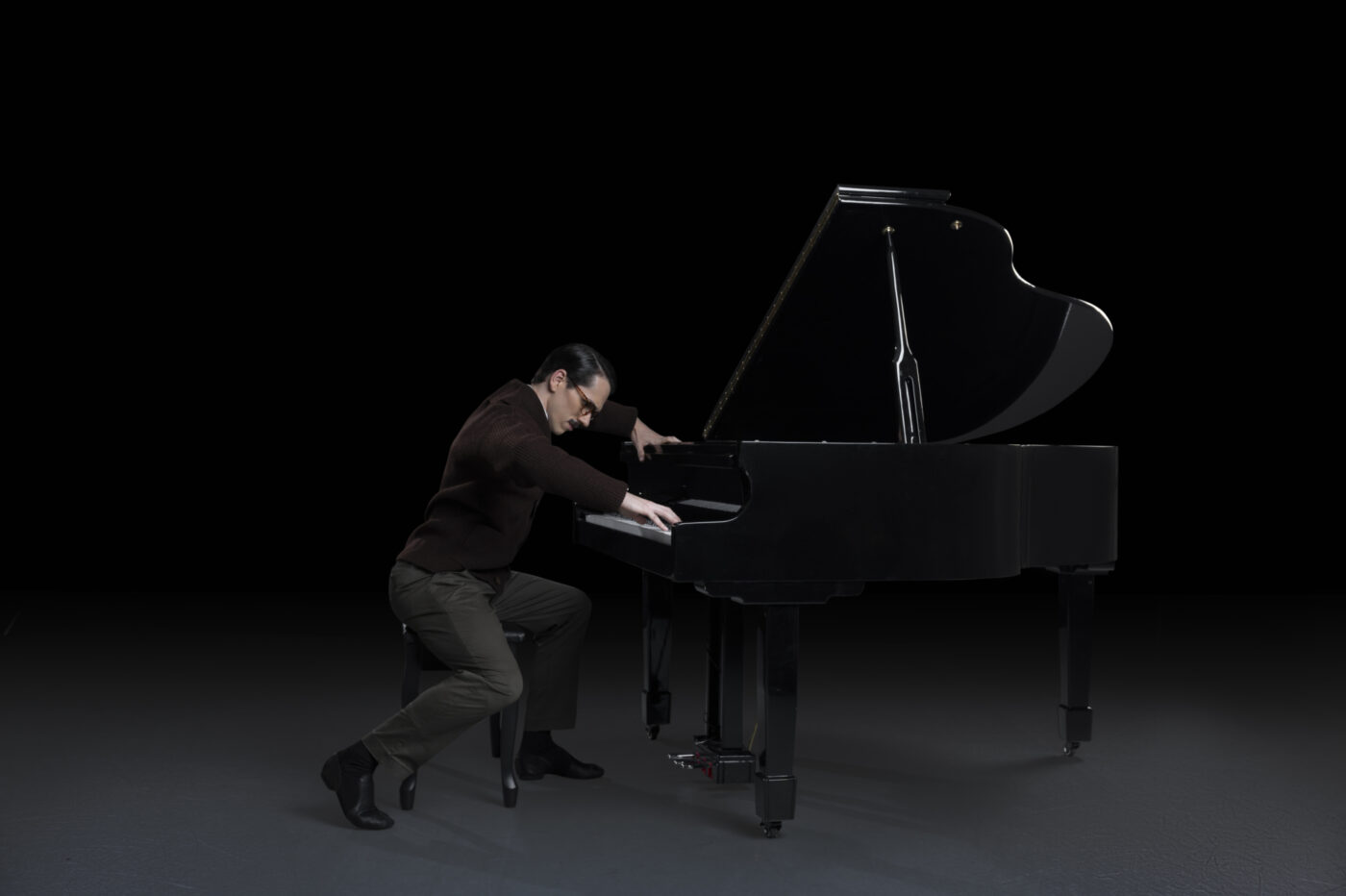Bringing Coco Chanel's story to life through music. An interview with composer Peter Salem
February 6, 2024

Apart from writing soundtracks for tv dramas such as the hugely popular BBC series Call the Midwife, Peter Salem is increasingly creating works for contemporary ballet. Coco Chanel: The Life of a Fashion Icon will be his eighth full-length ballet score. Atlanta Ballet spoke with Peter from his studio in London to discuss how he brings Coco Chanel's story to life through music - interpreting visual ideas, musical styles and influences, and using electronic instrumentation - to compose a score that's as mesmerizing as the ballet itself.
What is it like to work with Choreographer Annabelle Lopez Ochoa again?
It’s great working with Annabelle, she has excellent theatrical and visual ideas. I always find it interesting to view the treatment she sends and I then work on the music based on what I see. I’ve collaborated with Annabelle on numerous occasions and I know how she would want the music to reflect her physical language. If something is too romantic or sweet, I add something sharp to give it a bit of a kick. She likes that. I love her ideas, but I do recall a couple of challenges in interpreting the treatment. One scene simply described, ‘20 women dressed as flowers representing different scents enter the stage and dance for four minutes.’ Well, I initially thought there was a danger this could sound twee, sentimental, too pretty… and I knew Annabelle wouldn’t like that! So I focused on something surreal, exotic, and sensual for that sequence. Another challenge was the Stravinsky scene, where the treatment said, ‘characters from the Rite of Spring make a semi-circle and Stravinsky and Chanel perform a duet to themes from the Rite of Spring’. Quite a challenge! I started out with a crashing piano sound and Annabelle uses this to depict Stravinsky banging his head on the piano, frustratingly trying to write. Which is exactly like me in my studio, it’s brilliant! So sometimes I see an idea in the treatment and think ‘how is this going to work?’ But I trust Annabelle completely; it has been wonderful and great fun working with her again.
Coco Chanel: The Life of a Fashion Icon wasn’t an easy performance to score stylistically, and I recall the opening scene changed quite a lot from my initial idea. Originally, I was trying to be much more French, using the influences of Debussy and Ravel. In the end, we decided on something more abstract and electronic, with a static, textural space for the beginning scene.

What role does electronic instrumentation play in the orchestration of this score?
I always combine electronic and orchestral instruments, which a lot of ballet companies aren’t used to. But I do feel it should be part of the sound world by now. The use of electronic textures is fantastic for portraying atmospheric and psychological elements in a drama. I applied it in the ballet to emphasize Chanel’s loneliness, particularly at the start of Act I and for her exile in Act II. I also utilized it when she first visits Etienne Balsan’s mansion, to paint a picture of her feeling small and out of place in the extraordinary world she had just moved into. Electronics were also key for the scene illustrating the occupation of Paris. Here I used pre-recorded voices from radio broadcasts and sound effects, and in the final scene of the ballet some of Chanel’s own pre-recorded voice. A lot of that is triggered by drum pads and keyboards.
Were there any musical stylings that influenced the overall tone and character of this score?
I revisited and referenced a lot of French music. But rather than simply thinking ‘this piece is going to sound like Darius Milhaud’, I instead immersed myself in the music and remembered the elements that filtered though. And while Milhaud is a little lightweight and sweet for me, I did reference some of that light jazzy aesthetic in the sequences with more absurdist elements, such as the ‘Sailors’ and ‘Shoppers’ scene. I loosely reference musical styles of the early half of the 20th century - Honegger, Auric and even a bit of Gershwin and Rachmaninoff – as well as drawing on minimalism and later 20th century influences. For example, in the scene with the perfume ladies, I use Pierre Boulez-type, arpeggiated arabesque chords, followed by an Olivier Messiaen modal harmony melody. I draw on musical influences from all over the place, absorb them, and then come up with something that coheres. I even reference the influences of Michel Legrand, anything French!
Chanel’s fashion designs were minimalist, and the set and costumes in the ballet also reflect this style. What part did minimalism play in portraying Chanel’s story musically?
Minimalism certainly influenced how I saw Coco Chanel. I didn’t think of her as a romantic character. I’ve seen interviews of her, and she’s fascinating and edgy, with a lot of energy. In the final scene, I selected a recording from one of her interviews, in her own voice, “Je n’aime pas l’extravagance”. She hated extravagance. The whole purpose musically was to show contrast. The cabaret sequence where Chanel meets Balsan at the start of the ballet is set in the Belle Epoque period, and is very blousy. The idea was to show the contrast between the blousy and the much more paired down music, which is audible from the moment she dresses Gabrielle Dorziat in a minimalist fashion style. Chanel at work was a very big theme so deciding what music to use for the building of her empire was important. Work was Chanel’s driving force; she always found strength from it. I wanted something for the work scenes that flaunted energy and ultimately decided upon a baroque minimalism. I do see Chanel as baroque, not in an ornamental way, but from an angle of simplicity and clarity. I also didn’t think it was necessary for the music to depict her as being French; I consider her an international character connected to big names in international art.
How does the musical score reflect the lighter and darker sides of Chanel’s life?
The music follows the narrative, which turns much darker from the beginning of the second act as Chanel grieves the loss of Boy Capel. Her relationship with Stravinsky wasn’t exactly gloomy but she was ultimately left alone again and refocuses on work. In the second act, the work scenes are darker than those in the first, and the music follows by sounding much more driven, almost evoking a sense of escapism. The exile scene is a very somber time in Chanel’s life and again the music reflects this, with the use of electronics to portray the psychological impact. And while the second act is predominantly dark, there are moments of musical jazziness within that dimness, such as the waltz music in the scene of Chanel dancing with a German officer while at the Ritz Hotel.
How are Chanel’s relationships characterized by the music?
I wanted to make the dance scene with Boy Capel as intimate as possible - not in an overly romantic way, but touching and sensual - and I did use minimalism to highlight this intimacy. For me, this scene was incredibly significant as you don’t often see the softer side of Chanel. The idea of her finding and wanting that softness with Capel is almost more important than representing Capel himself. Her relationship with Stravinsky was quite edgy in comparison. While I progress through different styles and time periods, I try to make musical connections thematically throughout the whole ballet. For example, I re-introduce the Balsan theme stylistically during the scene with the Nazi Officer von Dincklage. While I reference German waltz music from the 1930s, using the clarinet and bassoon to imitate the saxophone, some fragments from the Balsan theme reappear, denoting Chanel’s need once again for somebody strong in her life during a time of weakness.
What was your favorite scene to compose, and why?
I really enjoyed the car sequence as I was able to highlight the sense of speed with swelling chords, which was exciting to do. And I loved the scene where Coco’s assistants rip the clothes off the overdressed Dior women. The Dior women sequence was particularly fun, and I included a lot of electronics, particularly pre-recorded bits of musical box and strange sounds to evoke the nightmarish scene when the girls come in dressed in Dior. It was a nod to the Belle Epoque period in many ways, with the superfluous skirts they were wearing. The music for them is a retake of the Balsan ball music but distorted and doll-like in a way. It was probably my biggest reference to Michel Legrand.
I also enjoyed using the vibraphone as it gave me a feeling of mirrors, glass, pearls, and fashion - very French! I really like this color of music (Boulez was very fond of this) in its transparency, and I hope I brought a little of that into the score. And I liked developing the baroque ‘Coco’s empire’ theme, with its contemporary rhythm, which could quite easily be used on the catwalks of today. I felt it important that the catwalk scene at the end should feel like a 20th century catwalk.
Are there any differences or similarities in how you may approach a television score versus a ballet score?
In ballet, you are writing music before you see a step of choreography. You might see a short workshop or casting where you can see a brief movement and try something out. But the music very much comes first, after the treatment. That’s always tricky and you hope you can inspire the choreographers to ‘see’ the choreography when they hear the music and that it just clicks for them. There is so much more room in ballet for music to drive the narrative, to create a visual space and to set a scene. You rarely have that opportunity in television as the music plays more of a supportive role. And in film, the music often is there to make something feel filmic. I certainly wouldn’t have the scope to develop such a range of dynamic expression in film or television. The richness you can achieve with a ballet score is wonderful.
Peter Salem’s original score was performed live by the Atlanta Ballet Orchestra under the baton of Conductor Jonathan McPhee in Coco Chanel: The Life of a Fashion Icon, from February 9 to 17 at the Cobb Energy Centre.